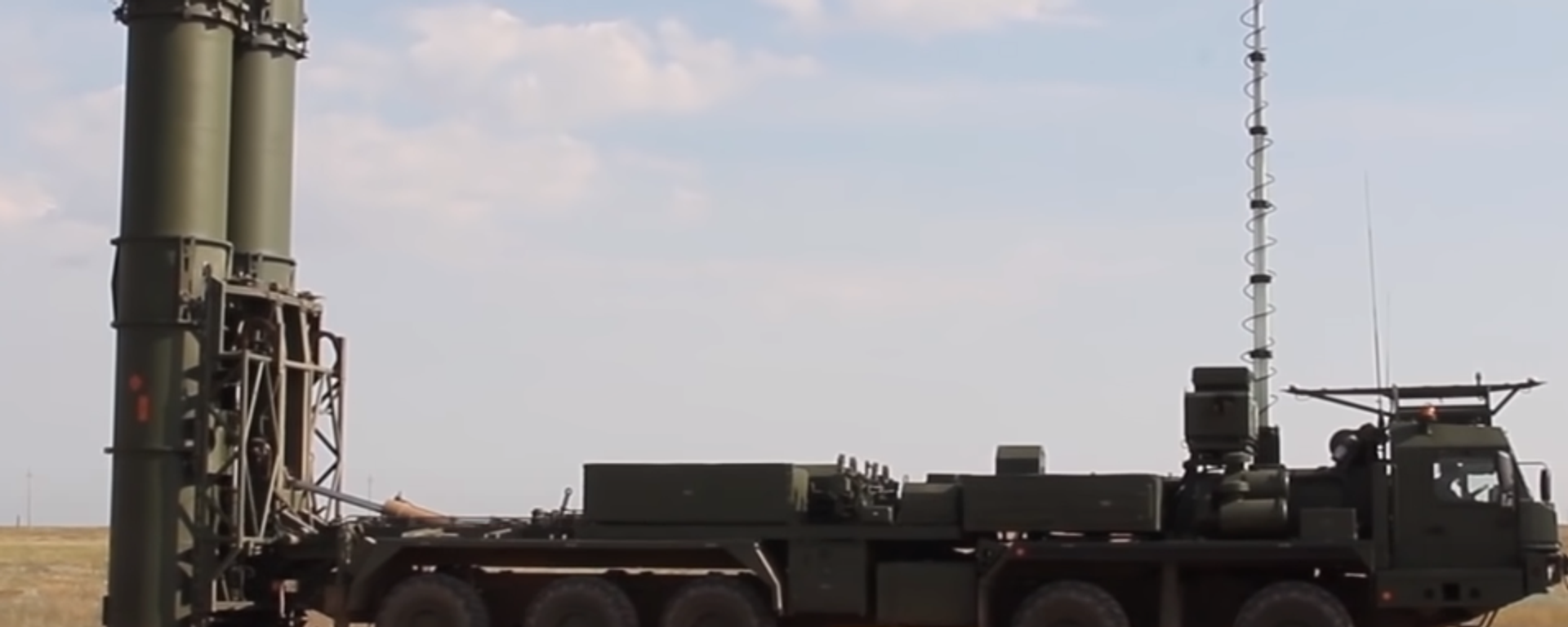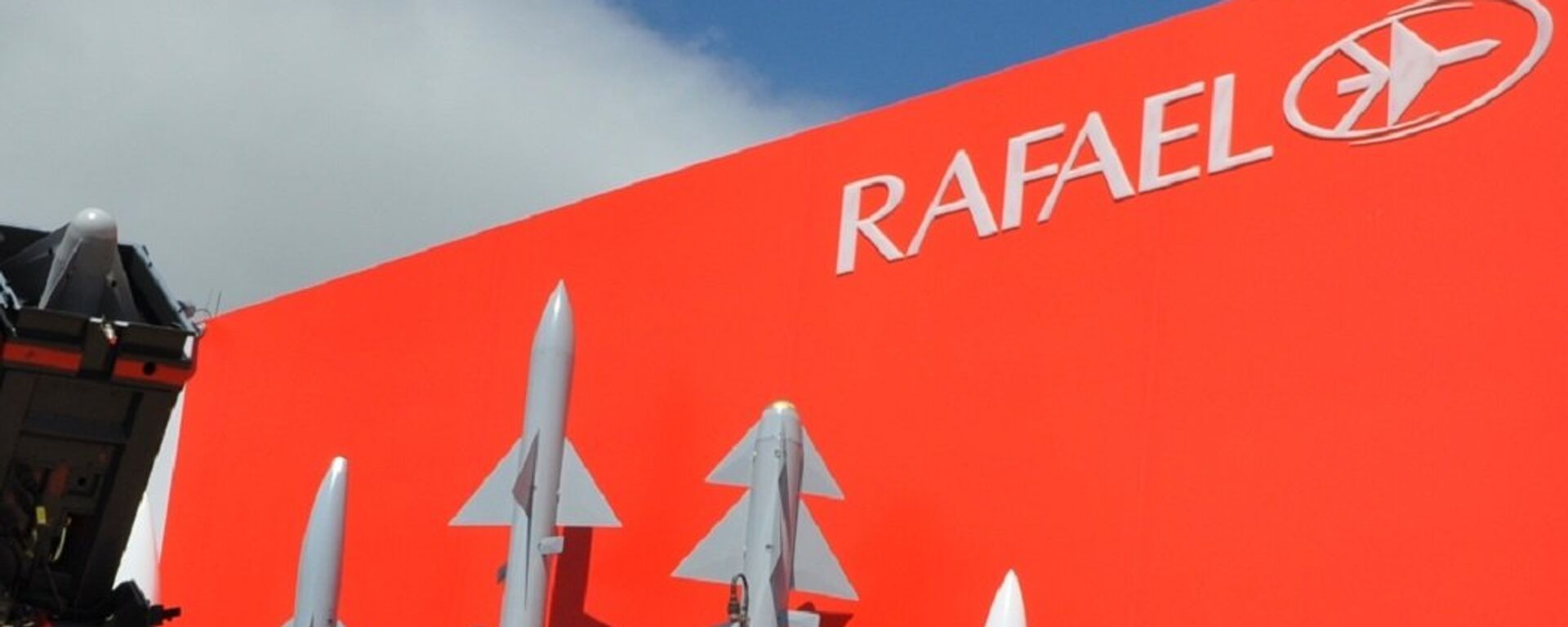https://sputnikglobe.com/20240423/greek-god-of-fire-what-we-know-about-russias-s-500-prometheus-missile-system-1118074871.html
God of Fire: What We Know About Russia’s S-500 Prometheus Missile System
God of Fire: What We Know About Russia’s S-500 Prometheus Missile System
Sputnik International
Russia’ defense ministry confirmed on Tuesday that the military will be receiving additional S-500 missile systems this year. Russian and foreign observers alike have touted the S-500 as perhaps the most sophisticated and powerful air and missile defense system in the world. Here’s why.
2024-04-23T16:42+0000
2024-04-23T16:42+0000
2024-04-23T17:15+0000
military
military & intelligence
russia
ukraine
nato
almaz-antey
almaz-antei
s-500
s-400
patriot
https://cdn1.img.sputnikglobe.com/img/07e5/0c/1d/1091890368_0:182:2278:1463_1920x0_80_0_0_65585344fff490d7ad2f64a2be3e50a2.jpg
Russia’s Air Defense Troops will be getting a much-needed boost to their capabilities this year amid the ongoing NATO proxy war in Ukraine, including the new S-500 air and missile defense system.In addition, Shoigu said, defense manufacturers will deliver new S-400s, S-300V4s, Buk-M3s, Tor-M2Us and unspecified “new generation radar systems,” beefing up Russia’s integrated anti-air and anti-missile shield.Responsible for keeping the airspace above the largest landmass on Earth clear of threats, Russia’s air defense forces will need all the help they can get in the coming months, especially after the US and Britain moved this week to dramatically escalate the Ukrainian crisis by approving tens of billions of dollars in new arms assistance, including Storm Shadow cruise missiles, and potentially, ATACMS tactical ballistic missiles.The S-500 Prometey (lit. ‘Prometheus’ – as in the ancient Greek god of fire) is a road-mobile air and missile defense system created by Almaz-Antey – Russia’s premier developer and manufacturer of missile-based anti-aircraft and anti-missile defense weapons. For starters, let’s get the system’s basic characteristics out of the way:HistoryDevelopment of the fifth-generation iteration of Almaz-Antey’s S-series long-range surface-to-air missile system began in 2002, the same year the United States unilaterally walked out of the Anti-Ballistic Missile Treaty with Russia and began experimenting with missile shield and massed conventional strike capabilities. Initial development work is known to have been carried out under the codename Vlastelin (lit. ‘Sovereign’ or ‘Master’).Preliminary design work was completed in 2011, with prototype equipment manufactured from 2013 on for testing, and a new series of missiles specifically for the system created in 2014-2015. Development work was completed in the late 2010s, after the system began rigorous testing by the military. The first S-500 brigade set arrived at the 15th Special Purpose Aerospace Forces Army – responsible for the defense of Moscow and central Russia, in the fall of 2021, with Almaz-Antei general director Yan Novikov confirming in the spring of 2022 that mass production was underway.CompositionLike other systems in its class, the S-500 consists not only of launchers, but a complex, difficult-to-decipher ecosystem of accompanying equipment (which can be mixed and matched depending on needs) including one or more target acquisition radars, counter-jamming equipment, command post, and one or more reloader vehicles.Because of the S-500’s designation for use at long ranges against missiles, aircraft and spacecraft and limited to no utility against short-range threats, the system is a high-value target which ideally should be accompanied at all times by Buk, Pantsir-S and/or other shorter-range air defense systems to protect it.The S-500’s configuration may include:MissilesA new generation of anti-aircraft and anti-missile missiles were developed specifically for the S-500. According to publicly available information, missiles used by the system include:CapabilitiesRussian and foreign military observers agree that the S-500’s declared characteristics make it indisputably the most sophisticated air and missile defense system in the world – and one likely to remain without analogues for years to come.“The S-500 is a robotic complex. In automatic mode and with elements of artificial intelligence, it is able to determine target type, separate friend from foe, select the most dangerous target, select the required type of missiles and fire them. All of this is carried out under the control of human operators, but can take place either in fully manual mode, when each function is performed by the operator, or in automatic mode,” Russia military expert Yuri Knutov wrote in an analysis about the Prometheus in 2022.The S-500 is an important tool for Russia’s increasingly dense air and missile defense umbrella which can help protect entire cities from enemy attack, defense affairs observer Alexander Khrolenko believes.“Under its ‘Prompt Global Strike’ concept, the United States can fire up to 6,000 Tomahawk cruise missiles against an enemy nation target in a single salvo. In the event of a military conflict with Russia, this concept uses all meaning. The surprise use of cruise missiles and ICBMs by the Pentagon and NATO against the territory of the Russian Federation would be deflected by air and missile defense systems. At the same time, retaliation against the aggressor using hypersonic, cruise and intercontinental missiles would take place.” Here, the S-500 acts as a key component of Russia’s air defense shield, and a “new technological breakthrough on a cosmic scale,” according to Khrolenko.Foreign observers agree, with an analysis by Military Watch Magazine in 2022 calling the S-500 a force multiplier for Russia’s Air Defense Troops, enhancing its ability to destroy both missile and space-based threats and fifth-gen military aircraft such as the F-22 and the F-35 (which the S-400 can also target).Knutov says that for the United States to get a rough analogue of the S-500’s capabilities, its engineers would need to combine, and then upgrade, several of its existing systems.The S-500, on the other hand, is rapidly deployable, and can be made ready for use in a matter of minutes, and pack up and leave just as quickly for rapid departure to avoid being spotted and struck after launching its missiles. Besides that, the S-500’s 600 km firing range is up to triple that of the THAAD or Patriots’ capabilities.
https://sputnikglobe.com/20220425/russias-s-500-missile-system-enters-mass-production-1095034431.html
https://sputnikglobe.com/20230613/russian-missile-system-s-350-destroys-real-target-automatically-for-first-time-1111107155.html
https://sputnikglobe.com/20240328/raytheon-gets-287mln-contract-boost-to-upgrade-166-tomahawk-missiles—pentagon-1117605813.html
https://sputnikglobe.com/20220924/israel-oks-sale-of-air-defense-system-to-uae-as-thaad-patriots-fail-to-stop-houthi-drones-report-1101174224.html
russia
ukraine
2024
News
en_EN
https://cdn1.img.sputnikglobe.com/img/07e5/0c/1d/1091890368_133:0:2093:1470_1920x0_80_0_0_91bb0ece71eedfdd2c24af48406f0dfb.jpg
what is the s-500 missile system, how many s-500s does russia have, is russia using s-500s, s-500 characteristics
what is the s-500 missile system, how many s-500s does russia have, is russia using s-500s, s-500 characteristics
Russia’ defense ministry confirmed on Tuesday that the military will be receiving additional S-500 missile systems this year. Russian and foreign observers alike have touted them as perhaps the most sophisticated and powerful air and missile defense system in the world. Here’s why.
Russia’s Air Defense Troops will be getting a much-needed boost to their capabilities this year amid the ongoing NATO proxy war in Ukraine, including the new S-500 air and missile defense system.
In addition, Shoigu said, defense manufacturers will deliver new S-400s, S-300V4s, Buk-M3s, Tor-M2Us and unspecified “new generation radar systems,” beefing up Russia’s integrated anti-air and anti-missile shield.
Responsible for keeping the airspace above the largest landmass on Earth clear of threats, Russia’s air defense forces will need all the help they can get in the coming months, especially after the US and Britain moved this week to dramatically escalate the Ukrainian crisis by approving tens of billions of dollars in new arms assistance, including Storm Shadow cruise missiles, and potentially, ATACMS tactical ballistic missiles.
The S-500 Prometey (lit. ‘Prometheus’ – as in the ancient Greek god of fire) is a road-mobile air and missile defense system created by Almaz-Antey – Russia’s premier developer and manufacturer of missile-based anti-aircraft and anti-missile defense weapons. For starters, let’s get the system’s basic characteristics out of the way:
Development of the fifth-generation iteration of Almaz-Antey’s S-series long-range surface-to-air missile system began in 2002, the same year the United States unilaterally walked out of the Anti-Ballistic Missile Treaty with Russia and began experimenting with missile shield and massed conventional strike capabilities. Initial development work is known to have been carried out under the codename Vlastelin (lit. ‘Sovereign’ or ‘Master’).
Like other systems in its class, the S-500 consists not only of launchers, but a complex, difficult-to-decipher ecosystem of accompanying equipment (which can be mixed and matched depending on needs) including one or more target acquisition radars, counter-jamming equipment, command post, and one or more reloader vehicles.
Because of the S-500’s designation for use at long ranges against missiles, aircraft and spacecraft and limited to no utility against short-range threats, the system is a high-value target which ideally should be accompanied at all times by Buk, Pantsir-S and/or other shorter-range air defense systems to protect it.
The S-500’s configuration may include:
A new generation of anti-aircraft and anti-missile missiles were developed specifically for the S-500. According to publicly available information, missiles used by the system include:
Russian and foreign military observers agree that the S-500’s declared characteristics make it indisputably the most sophisticated air and missile defense system in the world – and one likely to remain without analogues for years to come.
The S-500 is an important tool for Russia’s increasingly dense air and missile defense umbrella which can help protect entire cities from enemy attack, defense affairs observer Alexander Khrolenko believes.
“As part of the state armament program running until the year 2025, it’s planned to purchase five S-500 brigade sets, which will be combined with the A-135 missile defense system operating in central Russia. In the future, the ground-based S-500 may get a ship-based version,” the observer added.
“Under its ‘Prompt Global Strike’ concept, the United States can fire up to 6,000 Tomahawk cruise missiles against an enemy nation target in a single salvo. In the event of a military conflict with Russia, this concept uses all meaning. The surprise use of cruise missiles and ICBMs by the Pentagon and NATO against the territory of the Russian Federation would be deflected by air and missile defense systems. At the same time, retaliation against the aggressor using hypersonic, cruise and intercontinental missiles would take place.” Here, the S-500 acts as a key component of Russia’s air defense shield, and a “new technological breakthrough on a cosmic scale,” according to Khrolenko.
Knutov says that for the United States to get a rough analogue of the S-500’s capabilities, its engineers would need to combine, and then upgrade, several of its existing systems.
The S-500, on the other hand, is rapidly deployable, and can be made ready for use in a matter of minutes, and pack up and leave just as quickly for rapid departure to avoid being spotted and struck after launching its missiles. Besides that, the S-500’s 600 km firing range is up to triple that of the THAAD or Patriots’ capabilities.




